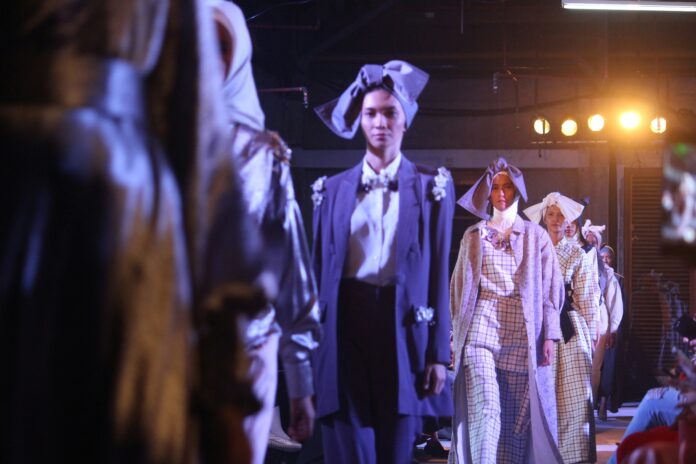
The cross-pollination of celebrities and high fashion is nothing new, but recent shows have brought it into fresh focus. Perhaps generating the most online buzz this season was Kylie Jenner’s runway debut during Coperni’s closing show for the SS25 edition of Paris Fashion Week. While some hailed Jenner as a “Couture Princess,” others felt that her appearance marked a step too far into pop culture territory. Either way, Coperni succeeded in making a statement.
Kylie’s debut reflects a growing trend where celebrities known for their social media influence or family fame are taking on roles once reserved for trained models. This fame, fueled by social media, speaks to a new kind of influence that appeals to a young, digital generation, but which risks shifting the focus from the artistry of the fashion to the celebrity’s presence. True, there are celebrity models, such as Gigi and Bella Hadid, and even Kylie’s sister Kendall, who come from famous families and have faced their fair share of nepotism accusations. However, they have managed to work past the nepo-label and earn their spot on the runway through skill and experience. Then there are those celebrity models who have not yet escaped the stamp of nepotism, Lila Moss for instance, because they may not yet have proven themselves as models of the same caliber. Is that to say that nepotism with skill is acceptable, and nepotism without is not? This double standard goes for celebrity models alike.
As for Coperni’s choice to feature a high-profile name like Kylie Jenner, one can do nothing but speculate, but the intention seems less about traditional runway modeling and more about expanding visibility and reach. The result? A runway moment that generated $16.8 million in media exposure, “outperforming 91 percent of brands at Paris Fashion Week this season.” But amid all the internet buzz, did the artistry get lost? Kylie as a closing statement was arguably a more memorable part of the show than the clothes themselves.
Back in 2012, Prada took a different route to casting celebrities. Taking a literal spin on ‘The Devil Wears Prada,’ and creating what went on to become an iconic showcase in the world of high fashion, the Italian design house brought some of Hollywood’s most notorious on-screen villains to its Fall 2012 runway: Gary Oldman, Willem Dafoe, Adrien Brody, Eli Roth, to name a few of the veteran actors featured in line.
For Prada, the celebrity approach was not about capturing quick headlines or generating media buzz but rather was quite clearly designed to build an experience that would leave a lasting artistic impact. Casting seasoned actors was an intentional alignment with Prada’s reputation for cinematic elegance and intellectualism. The presence of Dafoe, Oldman, and others wasn’t just about their fame but their gravitas, which elevated the show, turning it into a dialogue between high fashion and high art. For Prada, celebrity was a narrative tool, not merely a marketing ploy.
While Coperni’s inclusion of Kylie aimed to make couture more relatable and accessible, maybe even burn the bridges between high fashion and pop culture, Prada’s villain show showcased celebrities who had honed their craft and established cultural impact, making Prada’s show feel like an artistic bridge that successfully positioned fashion alongside respected art forms, such as cinema. If Prada’s villains were an homage to art and skill, Kylie’s appearance was a nod to pop culture—combining accessibility and buzz that challenges the traditional notion of runway exclusivity.
As fashion continues to embrace mainstream celebrity culture, the industry’s direction is worth watching. Will high fashion lean even further into these crossover moments, or will it remain a space that values artistry over influence? Whatever the outcome, Prada and Coperni have shown that intent matters; their choices highlight the difference between the memorable and the iconic, pushing us to consider what the runway truly represents—art, culture, or perhaps a blend of both.
Words by Ella Nelson